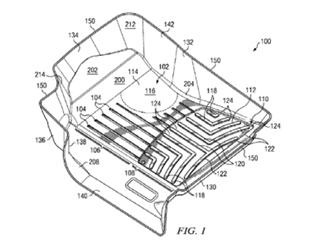The US Court of Appeals for the Federal Circuit affirmed an obviousness decision by the Patent Trial & Appeal Board, explaining that nothing requires a petitioner to identify a prior art reference as a “primary reference” in an obviousness challenge. Schwendimann v. Neenah, Inc., Case Nos. 22-1333; -1334; -1427; -1432 (Fed. Cir. Oct. 6, 2023) (Prost, Clevenger, Cunningham, JJ.)
Jodi Schwendimann filed lawsuits accusing Neenah of infringing several patents related to transfer sheets and methods for transferring images onto dark fabrics. Neenah filed several petitions for inter partes review (IPR) challenging various claims based on obviousness. The Board instituted the IPR challenges.
Schwendimann’s patents addressed a method for ensuring that dark images could be seen when transferred onto dark fabrics. Multilayer image transfer sheets were known in the prior art, teaching a two-step process to first apply a light background onto dark fabric and then apply the dark image on top. Schwendimann’s claims described a single-step solution, incorporating a white background, possibly of titanium dioxide, into the image transfer sheet so that a white background and dark image could be applied simultaneously onto a dark fabric.
All of the IPR petitions cited Kronzer as a prior art reference. Kronzer described multilayered image transfer sheets with varying configurations, although it lacked white pigment in a layer to transfer an image onto dark fabric. Another prior art reference, Oez, taught the use of a white pigment, such as titanium dioxide, in multilayered image transfer sheets. Schwendimann did not dispute that Kronzer and Oez taught or suggested all limitations recited in the challenged claims. Instead, she argued that there was no motivation for a skilled artisan to combine the references or to expect that such combination would yield a reasonable expectation of success. The Board considered and addressed each argument, relying on Neenah and Schwendimann’s experts’ testimony and the complementary and compatible nature of the references. The Board found the challenged claims obvious over Kronzer in view of Oez. Schwendimann appealed.
Schwendimann argued that substantial evidence did not support the Board’s findings that a skilled artisan would have been motivated to combine Kronzer and Oez and would have had a reasonable expectation of success in making the proposed combination. The Federal Circuit explained that substantial evidence means “such relevant evidence as a reasonable mind might accept as adequate to support a conclusion” and considered these two arguments together.
The Federal Circuit found that Schwendimann failed to show that the Board’s findings were not supported by “substantial evidence.” Like the Board, the Federal Circuit used both expert witnesses’ testimonies to explain that the references shared a common goal of improving image transfer characteristics. The Court found that Schwendimann’s arguments that Oez taught away from the proposed combination failed because Oez’s disclosure did not discourage a skilled artisan from using white pigment identified in the challenged patents or lead the skilled artisan in a direction divergent from the path taken in the challenged patents. Her argument that adding titanium dioxide into Kronzer’s transfer sheets could [...]
Continue Reading
read more

 Subscribe
Subscribe



